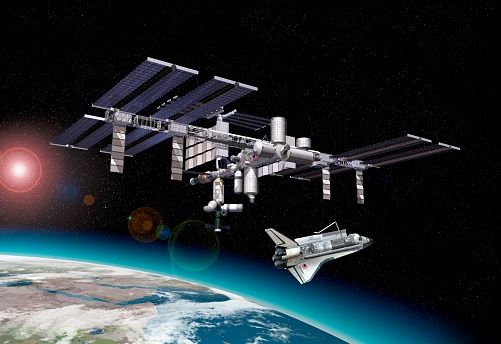
Just a few days after President Donald Trump signed a directive to clean up space, by pure coincidence U.K. astronauts planned to eject a satellite on a demo mission to see if the spacecraft can roam around Earth's orbit nabbing space garbage.
The new garbage-collecting satellite, called the RemoveDebris, was launched with the aim of circling the Earth and using a harpoon and a net to trap debris. The device was pushed out of the International Space Station on Wednesday with the help of a robotic arm. It is the largest satellite to be deployed from the ISS, BBC News reported.
Early this morning, NanoRacks released the largest satellite to ever be deployed from the @Space_Station. The #RemoveDEBRIS #MicroSat is now in orbit. Thanks to all involved in this exciting program! https://t.co/XbAdu0Rwg7 #ISS #Kaber pic.twitter.com/y5bV9TVHX2
— Nanoracks (@Nanoracks) June 20, 2018
This space junk test is just one of the ideas being considered to get rid of the approximately 7,500 tons of space garbage, like old rocket parts and broken pieces of spacecraft, that is circling the Earth. In January, Chinese scientists wrote a paper describing how they would clean up Earth's cluttered orbit using giant lasers.
Last December, astronauts launched the Space Debris Sensor, a device mounted to the top of the space station, which focuses on catching debris less than a millimeter across. Even though this space trash is smaller than a grain of sand, it is still big enough to wear away at the ISS.
The RemoveDebris satellite is not mounted to anything and doesn't have any lasers. It's meant to be a free agent, orbiting the Earth.
Astronauts had been storing the device on the space station since April. During the first month, ground controllers will monitor the satellite to make sure it is working properly.
For the first round of tests, the satellite will shoot out a piece of debris, which it will then track with a laser and camera. Then it will actually try to grab the object with a net. A small harpoon will be fired to learn more about how such devices move and affect a surface in space.
To avoid turning into a hunk of junk itself, the RemoveDebris will use a membrane to act like a sail, pulling the satellite down to Earth faster than would otherwise be the case.
"Once we know all its systems are behaving properly, only then will we begin our experiments," principal investigator Guglielmo Aglietti from the Surrey Space Center in the U.K. told BBC News.
Uncommon Knowledge
Newsweek is committed to challenging conventional wisdom and finding connections in the search for common ground.
Newsweek is committed to challenging conventional wisdom and finding connections in the search for common ground.
About the writer
Lisa Spear is a science writing fellow at Newsweek. She's previously contributed to a number of other outlets including Time and ... Read more
To read how Newsweek uses AI as a newsroom tool, Click here.








